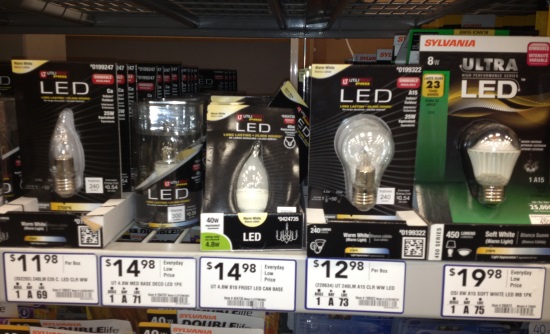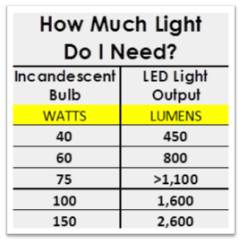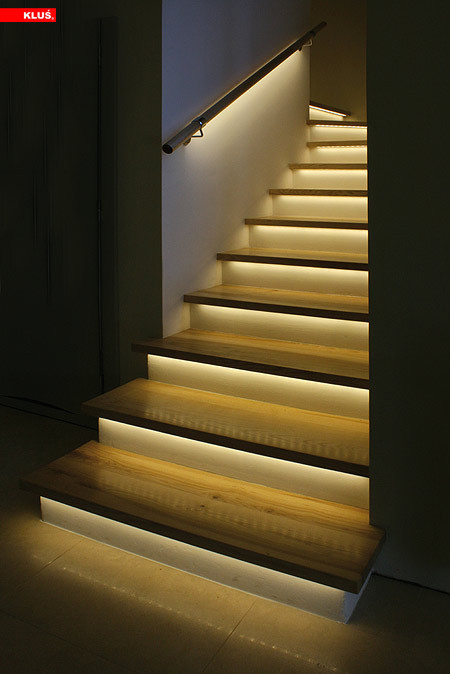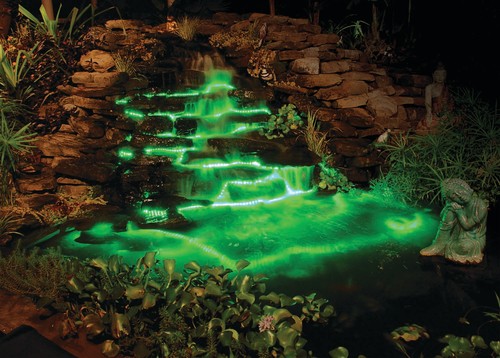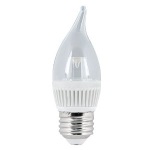 A few years ago an alarming news story was circulated about the impending government phase-out of standard incandescent light bulbs. By 2014, plans are to cease US production of bulbs 60 watts and higher. At the time, my fear was that we would all have to switch over to those curly-fry style fluorescent bulbs. You know, those ugly ones. That are also supremely unflattering. Unflattering in the manner of a 7-11 convenience store at 3 AM. I thought I would have to join the ranks of the hoarders, stockpiling a secret stash of warm-white incandescents. I did not share my secret stockpiling plan with anyone, obviously because I’d have to admit that I care more about my vanity than the environment. *Embarrassing* Though apparently I wasn’t the only one, according to this NY Times article. Well hallelujah, because LED is here to save the day.
A few years ago an alarming news story was circulated about the impending government phase-out of standard incandescent light bulbs. By 2014, plans are to cease US production of bulbs 60 watts and higher. At the time, my fear was that we would all have to switch over to those curly-fry style fluorescent bulbs. You know, those ugly ones. That are also supremely unflattering. Unflattering in the manner of a 7-11 convenience store at 3 AM. I thought I would have to join the ranks of the hoarders, stockpiling a secret stash of warm-white incandescents. I did not share my secret stockpiling plan with anyone, obviously because I’d have to admit that I care more about my vanity than the environment. *Embarrassing* Though apparently I wasn’t the only one, according to this NY Times article. Well hallelujah, because LED is here to save the day.
I began researching LED while I was working on a full-house lighting plan for a current project. I wanted to create a plan that was as energy-efficient as possible, and though I’d kinda heard about LED I wasn’t quite sure how to use it in the home. I thought LED was maybe just limited to those bluish tinted strip lights like you see at IKEA or in very modernist settings. Au contraire. Today LED light bulbs are manufactured in a variety of shapes and sizes, and offer full-spectrum daylight. They come fitted with standard bases so they can be used in regular lamps. Here are some of the top reasons to switch to LED:
You’ll save money in the long run.
LED’s are incredibly energy efficient (even more so than most CFL’s), and have amazingly long lifespans. They use about 10% of the energy required to power an equivalent incandescent bulb, and can last about 40 times longer, up to 50,000 hours. Though the bulbs cost a bit more upfront, prices have come way down and continue to drop as the technology advances. Expect to pay around $10-15 per bulb.
You’ll enjoy flattering light quality.
As I mentioned, LED’s come in daylight (3000K) and warm white (2700K), for a soft and pleasing look in the home. As for brightness, we’re all used to gauging light bulb brightness in watts, but watts are actually a measure of energy use. The correct measure of brightness is lumens, which is what you will notice is listed on LED bulbs. For reference, here is a handy little conversion chart:
LED light bulbs work in the lamps and light fixtures you already own.
LED bulbs can be used in most light fixtures that take standard incandescent or halogen bulbs. You do not have to buy a specialty LED light fixture for this purpose, which is something I wish I’d known before buying a bunch of LED sconces. And here’s a word to the wise: with those specialty LED light fixtures you OFTEN cannot replace the bulb inside. Of course, with such a long lifespan that may not be a huge issue, but I still don’t like the idea of a bulb not being replaceable if needed.
LED can be used in places regular bulbs can’t go, sometimes to dramatic effect.
Because they generate so little heat and because they come in a range of sizes (LED tape-style light strips in particular are flexible as well as super thin), LED’s can be used in all sorts of cool ways. From lighting the inside of a drawer to lighting your outdoor water feature, LED’s offer almost unlimited functionality and potential for creativity. Here are a few examples, via Houzz.com:
A note about dimmers:
If you plan to dim your LED lights (and of course you should!) you will need a specialty dimmer switch designed for LED and CFL lights. These look, function, and are installed exactly the same as regular dimmers.
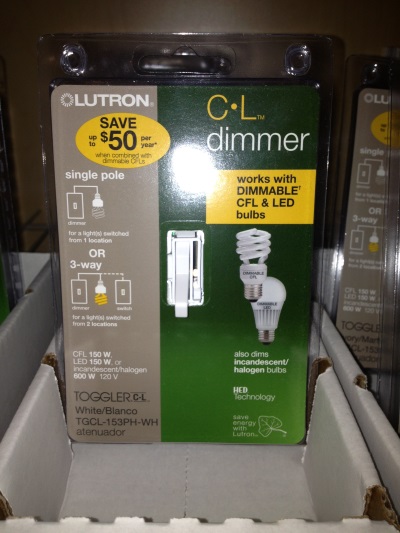
A specialty LED dimmer switch must be installed if you want to dim your LED bulbs. This one costs about $21.
As market research for this post, I replaced the incandescent light bulbs in my son’s bathroom with LED bulbs. I thought it was a good place to start, because he’s always forgetting to turn off the lights. I chose the “daylight” option at 3000K, which gives off a nice crisp light perfect for a bathroom. And no fluorescent-style deathly pallor, either. If you haven’t already replaced your incandescent bulbs, I hope this post inspires you to give LED a try!
——
Tamara Leicester is a licensed interior designer and owner of Tamara Heather Interior Design, LLC. She designs casually elegant interiors with an artistic sensibility, often drawing upon the talent of local artists and craftspeople in her work. Dreaming about updating your space? Learn more at tamaraheatherinteriors.com.

